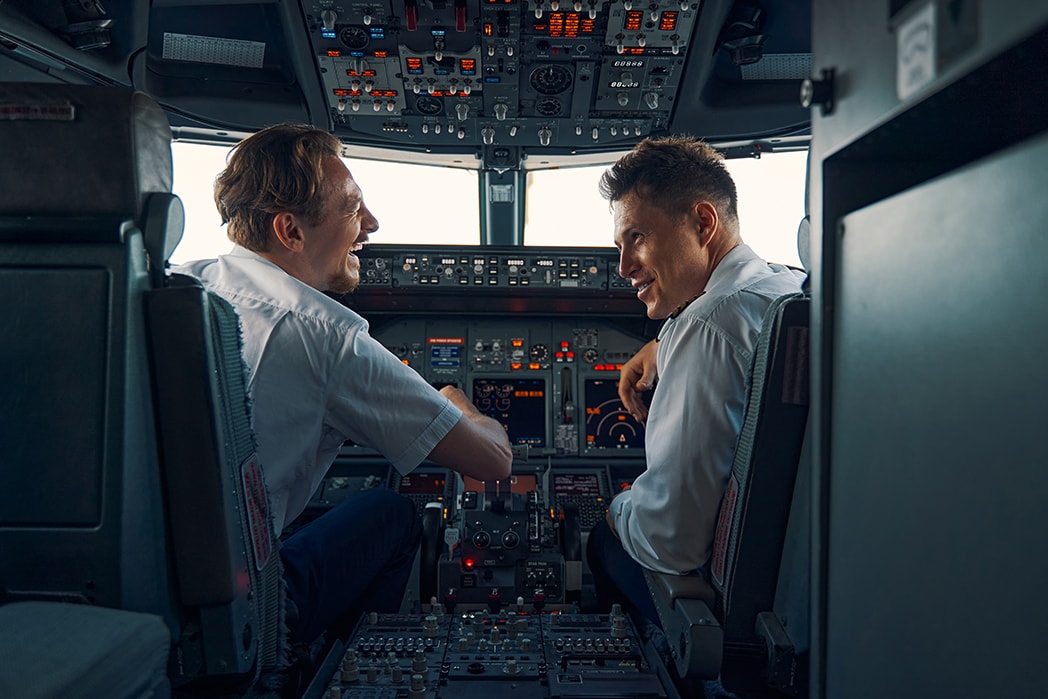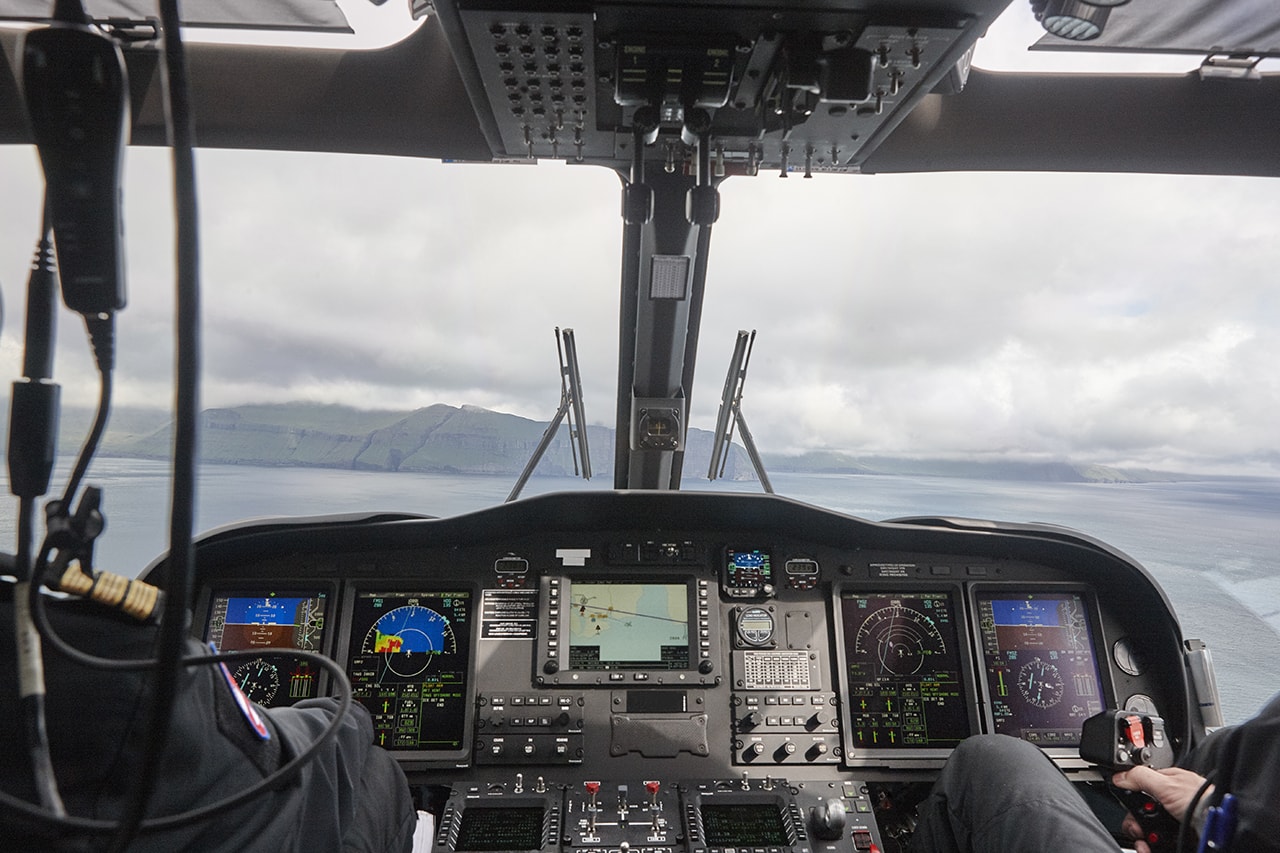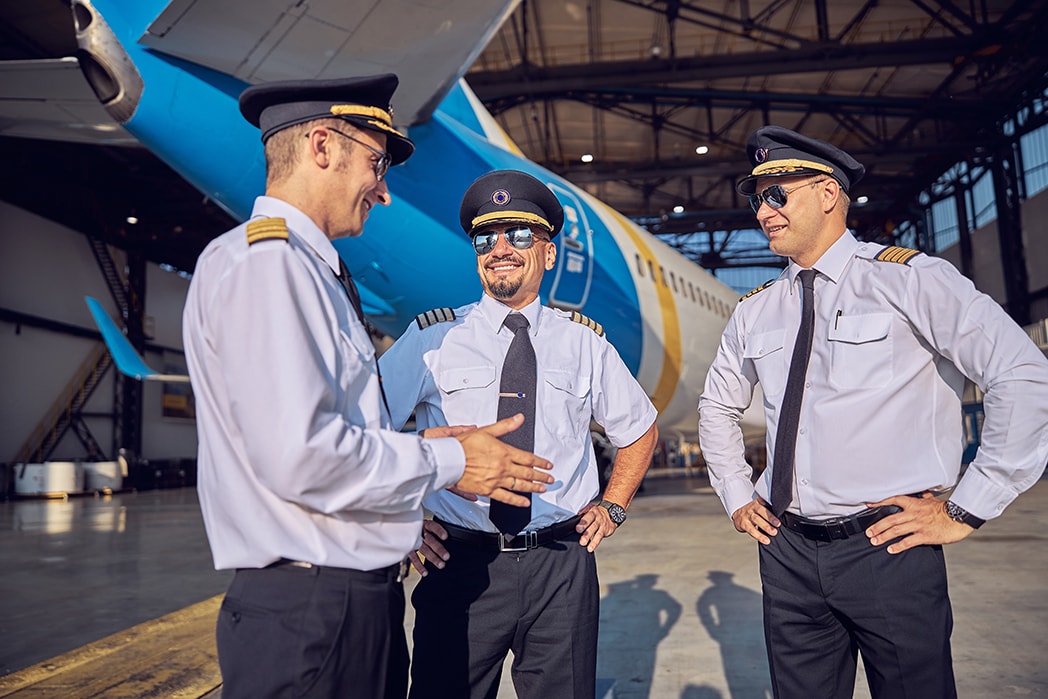Ultimate Guide: Co-Pilot Requirements and Career Path
Jul 02, 2025
Want to know the co-pilot requirements? This guide will cover the educational, certification, physical and medical requirements to become a co-pilot.
Key Takeaways
-
Co-pilots need to have relevant education qualifications including a private pilot certificate and advanced certifications like Airline Transport Pilot certificate.
-
Meeting physical and medical requirements and passing background checks is crucial for co-pilot certification and job.
-
Good communication and advanced navigation skills are must for co-pilots to ensure safety and operational efficiency in flight operations.
Understanding the Role of a Co-Pilot

The role of a co-pilot also known as first officer is very important in the safe and efficient operation of an aircraft. As the second in command the co-pilot assists the captain in managing the flight operations, making sure all procedures are followed to the dot.
This teamwork in the cockpit is key as both the captain and co-pilot rely on each other to make critical decisions and manage the aircraft systems.
Co-pilots do:
-
Read instruments
-
Help with navigation
-
Fill out flight logs
-
Step in during emergencies
Dependability and adaptability are key for co-pilots so they can handle changing flight plans and unexpected situations with precision. Their organizational skills ensure everything is documented and managed so the passengers and crew are safe.
In the cockpit hierarchy the captain has the final say, the co-pilot is a vital cog in the machine, so communication and trust are key as both pilots need to be on the same page to respond to any situation that arises.
Understanding this role is step one on your journey to becoming a professional co-pilot.
Educational Prerequisites for Co-Pilots
To become a co-pilot you must meet the following educational prerequisites:
-
High school diploma in some cases.
-
Most major airlines require an undergraduate degree.
-
Aviation, engineering or science related fields of study which provide a solid foundation for the technical side of flying.
Getting a private pilot certificate is the first step in this career path. This allows you to fly single engine planes after completing the training and passing the test. Many co-pilots also get a bachelors degree to meet the Federal Aviation Administration (FAA) requirements and further enhance their qualifications.
This combination of education and initial certification sets you up for more advanced training and certifications.
Essential Certifications for Aspiring Co-Pilots
Getting the certifications is the next step for any co-pilot. After getting your private pilot certificate, the next step is to get an instrument rating. This allows first officers to fly in all kinds of weather and be more versatile and safe.
Next up is the commercial pilot license, which requires a certain number of flight hours and a written exam. Understanding the requirements for commercial pilot license is essential to ensure you meet all necessary qualifications before advancing.
And a multi engine rating is usually required to fly an aircraft with more than one engine.
To qualify for the Airline Transport Pilot (ATP) certification, which is often required by commercial airlines, first officers must complete an ATP program.
This is a tough certification process to make sure co-pilots are ready for commercial flying meeting the same high standards expected of airline pilots operating in complex airspace and under demanding conditions.
Physical and Medical Requirements

You must meet the physical and medical requirements to be a co-pilot. You will need to get a Class 1 Medical Certificate which verifies you meet the strict health standards set by the aviation authorities. Understanding the aviation medical class 1 requirements is essential to ensure you qualify for this certification.
This includes having distant vision of 20/20 or better in each eye, either with or without correction.
Hearing is another big one; you must be able to hear a conversation from 6 feet away in a quiet room. Co-pilots can’t have any medical history of substance abuse, psychosis, certain heart conditions or high blood pressure above 155/95.
If you are over 35, you will need an electrocardiogram every year to maintain first class medical certification. These strict standards ensure you are fit to fly and can respond to any medical emergency that may arise during a flight.
Age and Background Checks
Age and background checks are part of the co-pilot certification process. You must meet the age requirements to be eligible for certification, so you have the maturity and experience for the job.
Background checks are thorough:
-
10 year FBI verification
-
Driving records
-
Drug testing
-
Credit history
A clean record is required, but airlines will review past misdemeanors on a case by case basis. These checks ensure you are trustworthy and reliable and the aviation industry is safe.
Choosing the Right Flight School

Choosing the right flight school is a big decision in your journey to become a co-pilot. The qualifications and teaching methods of the instructors will impact the quality of training you receive.
Get feedback from current and past students to see how effective the flight school’s programs are.
Evaluating the maintenance status and variety of aircraft at the flight school is important. Well maintained and diverse aircraft will give you a more comprehensive training.
Location of the flight school will also affect your training frequency due to weather and airspace complexities.
Accreditation by aviation authorities ensures the school meets high safety and operational standards. These will help you choose a flight school that fits your training needs and career goals.
Core Training Components for Co-Pilots
The co-pilot training components are designed to build a solid foundation of knowledge and skills. Ground school is a big part of this training and covers about 80 hours of:
-
Flight theory
-
Navigation
-
Regulations
-
Weather
This theory is important to understand the principles of flight and the rules of aviation.
Simulator training is another big part of this, emergency procedures, navigation and communication protocols.
Continuous practice in simulators and real world scenarios is important to develop the coordination and navigation skills to fly an aircraft safely.
These training components will have you well prepared for the real world of flying, and are often delivered through structured training programs designed to meet aviation authority standards.
Building Your Flight Hours Efficiently
Building your hours efficiently is key to getting your co-pilot certification. Candidates need 200 hours and using all the flying opportunities is key to getting those hours fast.
Structured time building programs offered by flight schools will give you a clear path to build your hours and gain valuable flight experience.
Ways to increase hours and share costs:
-
Fly with other pilots to share costs and hours.
-
Volunteer with organizations like Angel Flight to get hours while doing meaningful missions.
-
Use simulators to supplement your real hours to practice specific skills and scenarios.
These will help you build your hours fast.
Mastering Key Skills for Co-Pilots
Mastering skills is key to being a good co-pilot. Communication involves:
-
Talking to captains, co pilots and air traffic control
-
Clear communication during critical phases like takeoff and landing
-
Preventing misunderstandings to keep everyone safe
These are key to safe flight ops and security.
Advanced navigation skills are also important to increase situational awareness and decision making. Mastering emergency procedures is critical to handling unexpected situations and keeping everyone safe. These are the basics of the job and keep flights focused on the plane.
Pilots who consistently apply these skills tend to grow into successful first officers who contribute to safety, efficiency, and crew coordination at the highest level.
Just as pilots rely on co-pilots for support in the cockpit, professionals in other fields use tools like Microsoft 365 Copilot to enhance decision-making, streamline communication, and maintain operational efficiency.
Certification and Licensing Process

The co-pilot certification and licensing process involves exams and paperwork. Candidates must complete an ATP program and pass an exam to get an Airline Transport Pilot certificate.
This is a big deal in a co-pilot’s career path, proving they are ready for commercial aviation.
Getting a flight instructor certificate can also be helpful, so you can work as a flight instructor and get more flight time and experience. The Pilot Records Database keeps a record of all your flying records.
Keeping accurate and up-to-date flight records is essential for verifying qualifications, logging hours, and complying with regulatory standards.
This includes certifications and training outcomes. This ensures all pilots meet the high standards for safe and efficient flight operations.
Landing Your First Co-Pilot Job
Landing your first co-pilot job requires strategic job searching and preparation. Networking, applying to regional airlines and entry-level positions are good ways to get your first job.
Researching the airline you applied to helps you understand their operations and culture which can help during the interview.
Bring your logbook and medical certificate to the interview shows you are prepared and professional. Prepare specific examples from your past data experiences to show your skills and decision making abilities including how you managed your file to verify your qualifications.
Follow up with a thank you note after the interview shows your appreciation and enthusiasm for the position. These steps will get you your first co-pilot job and start your career in aviation.
Summary
So to summaries, to become a co-pilot you need to meet various educational, certification and medical requirements. Choosing the right flight school, building flight hours efficiently and mastering the essentials are key to this journey.
With dedication and the right training you can navigate the path to becoming a co-pilot and ultimately an airline transport pilot.
Being a co-pilot requires commitment and perseverance but the rewards are huge. The knowledge and skills you gain through this process will prepare you for a career in aviation and ensure every flight is safe and efficient.
Frequently Asked Questions
What educational background is required to become a co-pilot?
A bachelor’s degree is usually required to be a co-pilot, preferably in aviation, engineering or related sciences, but high school diploma may be accepted in some cases. Relevant education will make you more competitive in the aviation industry.
What are the key certifications needed to become a co-pilot?
To be a co-pilot you need to have the following certifications: private pilot certificate, instrument rating, commercial pilot license, multi-engine rating and Airline Transport Pilot (ATP) certification.
These are the minimum requirements to meet the standards to fly professionally.
What are the physical and medical requirements for co-pilots?
Co-pilots are required to hold a Class 1 Medical Certificate, maintain 20/20 vision (with or without correction), possess adequate hearing, and be free from significant medical conditions like substance abuse and certain heart diseases. Meeting these physical and medical standards is crucial for ensuring flight safety.
